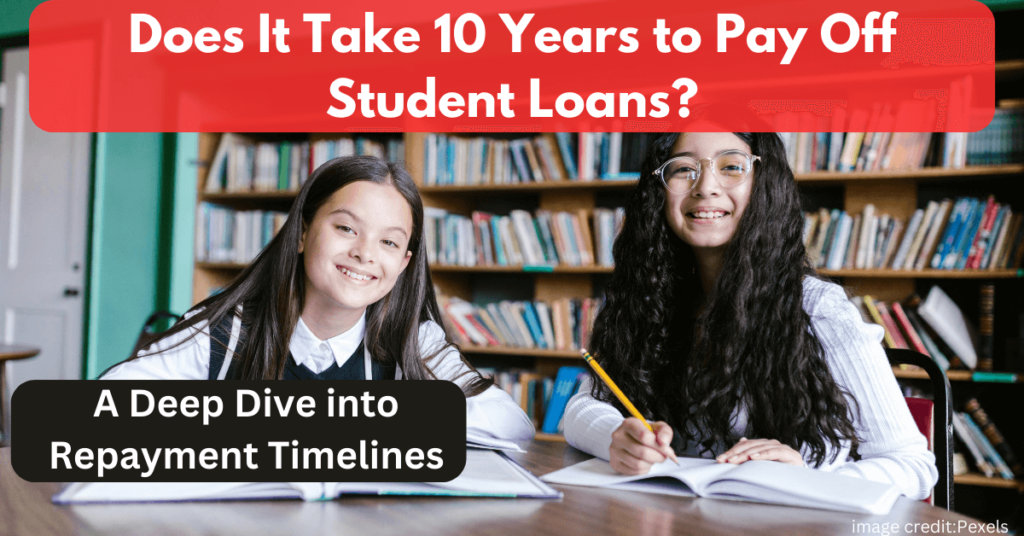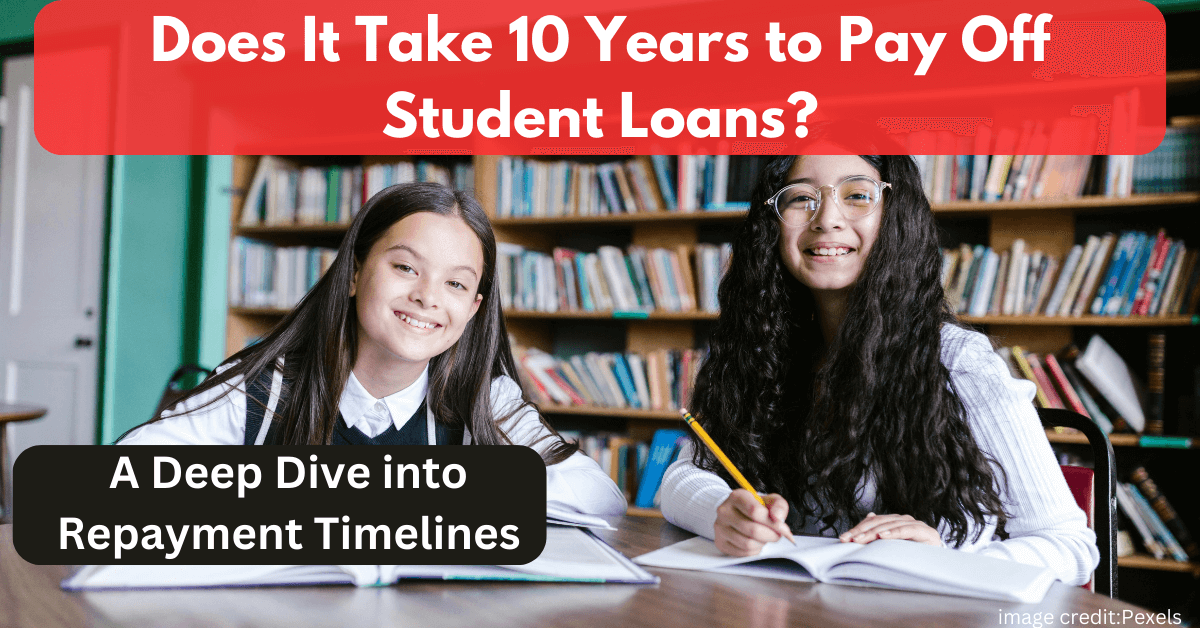Does It Take 10 Years to Pay Off Student Loans? A Deep Dive into Repayment Timelines Student loans often feel like a financial ball and chain, with repayment plans that seem to stretch on endlessly. Many borrowers ask a common question: “Does it take 10 years to pay off student loans?” While the standard repayment plan in the U.S. is indeed 10 years, the answer isn’t as straightforward as it may seem. Let’s explore the factors that influence how long it takes to pay off student loans and what options borrowers have to shorten—or extend—that timeline.

Understanding the Standard 10-Year Repayment Plan
The standard repayment plan for federal student loans is structured to be completed in 10 years. Under this plan, borrowers pay fixed monthly installments designed to cover both the principal and the interest accrued. The predictability of the plan appeals to many because it offers a clear finish line: after 120 consistent payments over a decade, your loan balance should be fully paid off.
However, this plan assumes borrowers can afford their payments without financial hardship. For those with higher loan balances or lower incomes, the standard 10-year plan might not be feasible. As a result, many turn to alternative repayment plans, which can significantly extend the repayment period.
Does It Take 10 Years to Pay Off Student Loans for Everyone?
Not necessarily. Whether it takes 10 years to pay off student loans depends on several factors:
- Loan Amount: Borrowers with modest loan balances may find the 10-year repayment plan manageable, while those with six-figure debt often require more time to pay off their loans.
- Income and Expenses: High income or minimal expenses can help borrowers accelerate payments, while financial strain may necessitate a longer repayment period.
- Repayment Plan Choice: Federal loans offer multiple repayment options, including income-driven repayment (IDR) plans that adjust monthly payments based on income and family size but extend the timeline to 20 or even 25 years.
For private loans, the terms vary based on the lender, and repayment periods can range from 5 to 20 years. Borrowers should check their loan agreement to understand the specifics.
Strategies to Shorten the Repayment Period
If you’re determined to pay off student loans faster than 10 years, there are strategies to help:
- Make Extra Payments: Paying more than the minimum each month reduces the principal faster, saving on interest and shortening the repayment term.
- Refinance at a Lower Rate: If you have good credit, refinancing your loans can secure a lower interest rate, making payments more manageable and reducing the total cost of the loan.
- Use Windfalls Strategically: Tax refunds, bonuses, or other unexpected income can be directed toward your student loans to accelerate repayment.
- Adopt a Frugal Lifestyle: Cutting unnecessary expenses allows you to allocate more money toward your loans.
By employing these strategies, many borrowers manage to pay off their loans in less than 10 years.
When It Takes Longer Than 10 Years
For many borrowers, especially those with substantial loan balances or those on income-driven plans, paying off student loans in 10 years is unrealistic. Income-driven repayment plans like Income-Based Repayment (IBR) or Pay As You Earn (PAYE) are popular among borrowers struggling to meet the standard monthly payment. These plans cap payments at a percentage of income and extend the repayment period, sometimes up to 20-25 years.
While these plans offer short-term relief, they come with drawbacks. Extended repayment periods mean more interest accrues over time, increasing the total cost of the loan. Additionally, while some borrowers may qualify for loan forgiveness after 20-25 years of consistent payments, the forgiven amount may be considered taxable income.
The Role of Loan Forgiveness Programs
Public Service Loan Forgiveness (PSLF) is a program that allows borrowers working in qualifying public service roles to have their remaining federal loan balance forgiven after 10 years (120 payments). In such cases, does it take 10 years to pay off student loans? The answer is yes, but only for borrowers who meet the stringent requirements of the program.
For those not in public service, other forgiveness options may take longer. Teachers, nurses, and other professionals in certain fields may qualify for profession-specific loan forgiveness programs that reduce the repayment timeline.
Real-Life Examples
To provide a clearer picture, let’s examine two scenarios:
- Maria’s Journey on the Standard Plan
Maria borrowed $30,000 for her undergraduate degree at a 5% interest rate. Her fixed monthly payment under the standard 10-year plan is around $318. By staying consistent, Maria pays off her loan in exactly 10 years, with a total repayment of approximately $38,160, including interest. - John’s Experience with Income-Driven Repayment
John borrowed $60,000 for a graduate degree and enrolled in an income-driven repayment plan due to his modest starting salary. Initially, his payments were only $150 per month. Over time, as his income grew, his payments increased. After 20 years, John qualifies for forgiveness but ends up paying significantly more in interest compared to the standard plan.
So, Does It Take 10 Years to Pay Off Student Loans?
The answer depends on individual circumstances. For some, the standard 10-year plan provides a clear path to debt freedom. For others, the timeline is extended due to alternative repayment plans, financial challenges, or high loan balances. While 10 years is the baseline, borrowers have options to tailor their repayment journey to fit their needs.
Final Thoughts
Understanding your repayment options is key to managing student loans effectively. Whether you’re aiming to stick to the standard 10-year plan or considering extended repayment options, it’s essential to evaluate your financial situation and goals. And remember, the question, “Does it take 10 years to pay off student loans?” doesn’t have a one-size-fits-all answer. With careful planning and proactive steps, you can take control of your repayment journey and work toward a debt-free future

